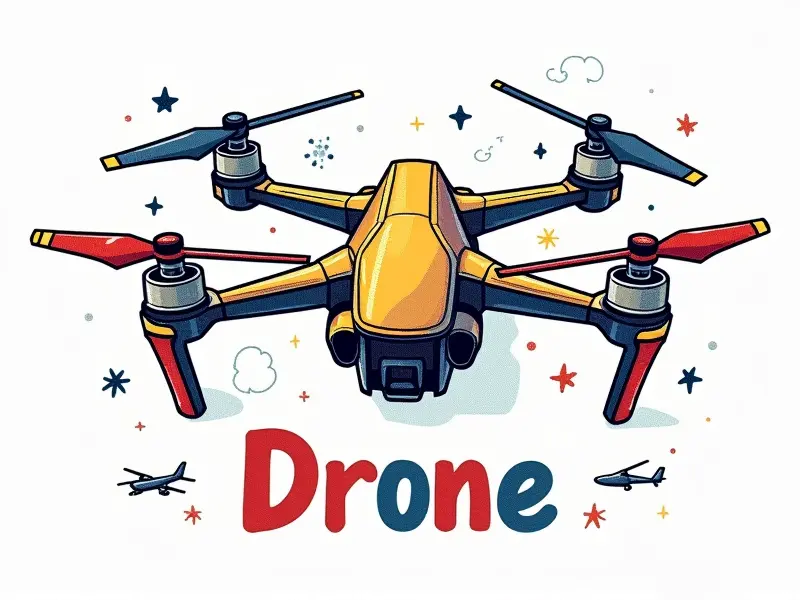Quadcopter crash recovery?

How to Recover from a Quadcopter Crash
Recovering your quadcopter after a crash can be daunting, but with the right approach and tools, you can often bring it back to life. This guide will walk you through the steps needed to assess damage, repair components, and restore functionality.
Fixing Your Crashed Quadcopter
The first step after a crash is to carefully examine your quadcopter for any obvious signs of damage. Look for bent propellers, cracked frame pieces, or loose electronic components.
- Propeller Inspection: Bent or broken propellers are common and can usually be replaced easily.
- Frame Damage Assessment: Check the main body of your quadcopter for cracks or bends that might affect its structural integrity.
- Electronics Examination: Inspect all electronic components, such as the flight controller and battery connectors, to ensure they are securely attached and not damaged.
Post-Crash Care for Quadcopters
Proper post-crash care is crucial in ensuring that your quadcopter can continue flying safely. This involves cleaning debris from the frame and components, tightening loose screws, and performing a thorough battery check.
- Cleaning: Use compressed air or a soft brush to remove dirt and dust from all parts of the quadcopter.
- Tightening Screws: Re-tighten any loose screws on the frame, propeller guards, and motor mounts.
- Battery Check: Test your battery for voltage drops or swelling that could indicate a damaged cell.
Handling Quadcopter Mishaps
Mishaps during flight can range from minor issues to major disasters. Knowing how to handle these situations effectively is key to saving your drone and minimizing downtime.
- Immediate Action: Land the quadcopter safely as soon as you notice any unusual behavior or signs of malfunction.
- Remote Inspection: If possible, use a remote camera or mobile app to inspect your drone for damage before landing.
- Plan B: Have spare parts and tools available so that you can quickly repair minor issues in the field.
Revive Your Damaged Drone
Bringing a damaged quadcopter back to life often requires patience, precision, and the right replacement parts. Here’s how to go about it:
- Replace Propellers: Purchase new propellers from your manufacturer or an authorized retailer.
- Frame Repairs: Use epoxy or specialized glue for repairing cracked frames, ensuring a strong bond and minimal weight gain.
- Electronic Component Replacement: Replace any damaged electronic components with identical ones to maintain flight stability.
Recovering From a Quadcopter Crash
The process of recovering from a crash involves multiple stages, including damage assessment, repair planning, and testing. Each stage is crucial in ensuring that your quadcopter can fly again safely.
- Detailed Assessment: Take detailed photos or videos of the damaged areas to help identify what needs fixing.
- Repair Planning: Develop a repair plan based on the severity and type of damage. Prioritize critical components first.
- Testing Phase: After repairs, conduct a thorough testing phase in an indoor area before returning to outdoor flights.
Quick Fixes for Damaged Quadcopters
Sometimes you need immediate solutions while out flying. Quick fixes can help stabilize your drone until you have the time and resources to perform a full repair.
- Tape It Up: Use electrical tape or specialized adhesives to temporarily secure loose parts or cover small cracks.
- Battery Swap: If your battery is drained, swap it with a fully charged one immediately.
- Propeller Replacement: Keep spare propellers handy and replace broken ones as soon as possible to maintain balance.
DIY Quadcopter Crash Recovery Tips
Maintaining your quadcopter yourself can save you time and money. Here are some DIY tips for handling common crash scenarios:
- Learn Basic Electronics: Understanding basic electronics will help you troubleshoot and repair minor issues.
- Use 3D Printing: Create custom parts using a 3D printer, which can be particularly useful for unique or proprietary components.
- Invest in Quality Tools: Having high-quality tools such as screwdrivers, pliers, and soldering irons is essential for effective DIY repairs.
Bounce Back from a Quadcopter Mishap
Facing a mishap can be frustrating but learning to bounce back quickly will keep your quadcopter in the air longer. Here’s how:
- Stay Calm: Maintain composure and think logically about what needs fixing.
- Seek Expert Advice: Consult with other drone enthusiasts or professionals for advice on repairs you're unsure of.
- Document Fixes: Keep a record of all fixes made, noting parts replaced and methods used to help future troubleshooting.
Post-Crash Recovery Guide for Quads
A comprehensive guide is essential in guiding you through the post-crash recovery process. Here’s a step-by-step approach:
- Initial Assessment: Conduct an initial assessment of damage to determine repair scope.
- Gather Tools and Parts: Collect necessary tools, replacement parts, and materials for repairs.
- Repair Execution: Carefully repair damaged components using appropriate techniques and materials.
- Testing and Calibration: Perform thorough testing to ensure all systems are functioning correctly before returning to flight.
Rescuing Your Downed Quadcopter
When your quadcopter goes down, quick thinking and a methodical approach can help you rescue it efficiently. Here’s what you should do:
- Safety First: Ensure the area is safe before approaching the downed drone.
- Damage Assessment: Conduct a thorough damage assessment to understand repair needs.
- Immediate Repairs: Perform any necessary immediate repairs, such as replacing broken propellers or securing loose components.
- Transport Back: Carefully transport the drone back home for further inspection and repairs.
Conclusion
Recovering from a quadcopter crash requires a combination of technical knowledge, practical skills, and patience. By following the steps outlined in this guide, you can minimize downtime and maximize your drone’s operational readiness. Remember to always prioritize safety and seek professional advice when needed.

